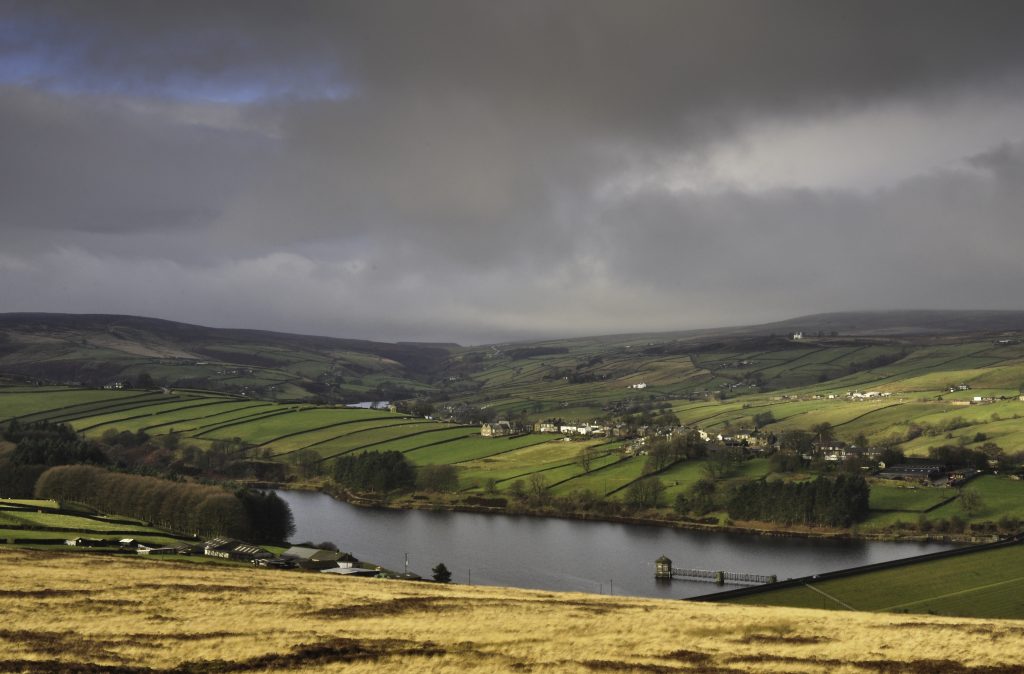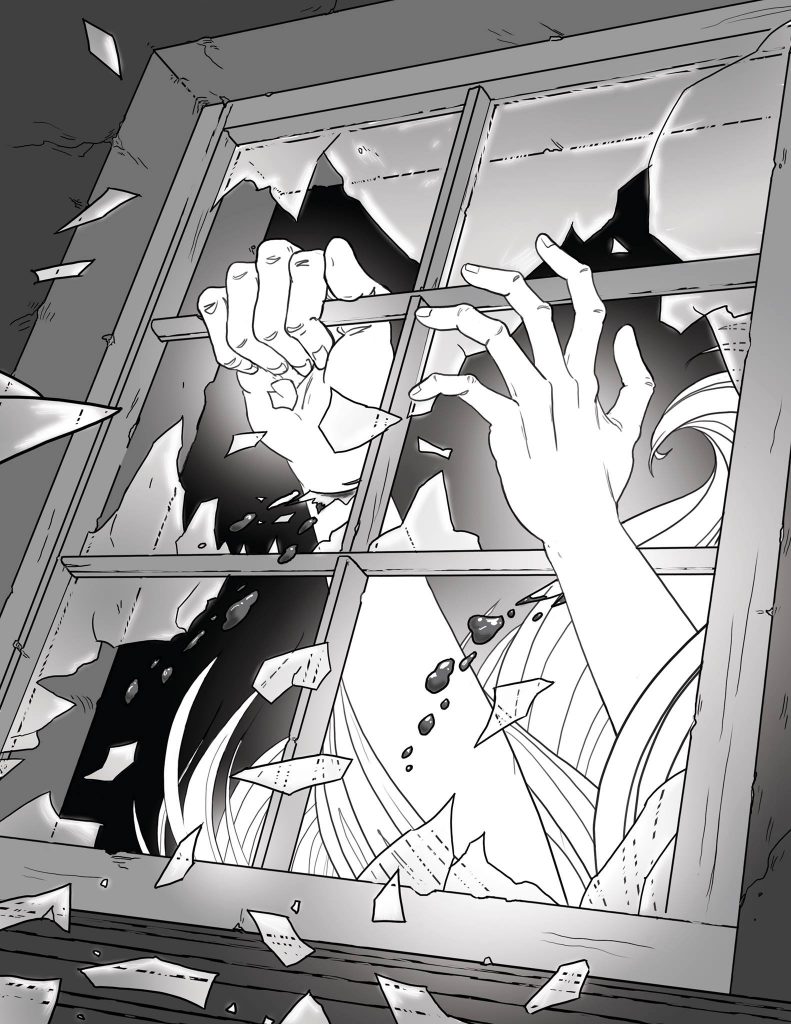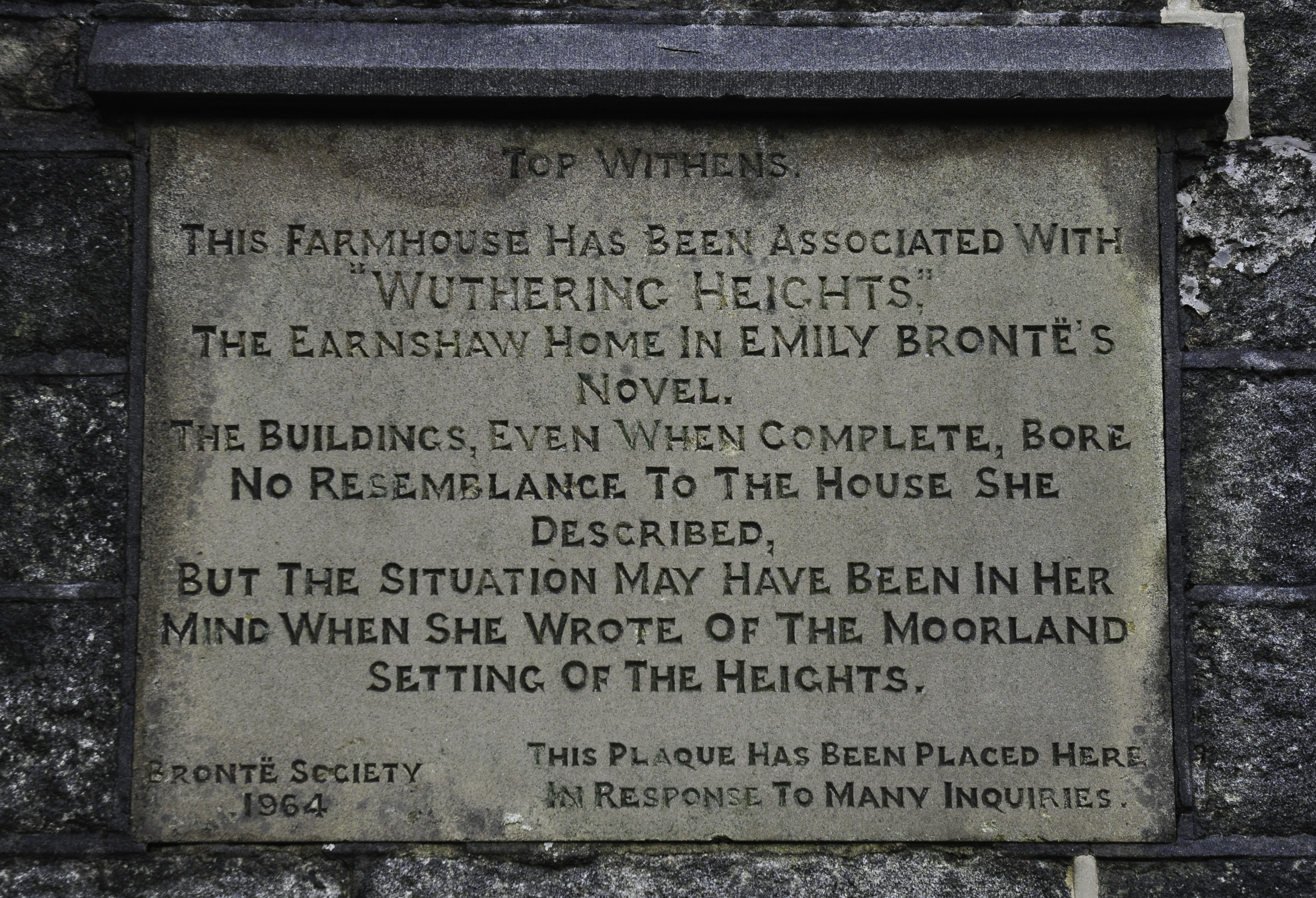In her novel ‘Changing Heaven’ the Canadian novelist, Jane Urquhart, imagines the ghost of Emily Brontë, alone and reflective, wandering the bleak, windswept moors above Top Withens, or is it Wuthering Heights? We can no longer tell. The moors, the hills, the backbone of England; they were never the same after 1847. They became Brontë Country.
“I did, you know,” said Emily, eventually coming back to earth, lying down, relaxing on a couch of heather. “I knew it the day I finished my book. My dog Keeper and I set out on our daily walk and, suddenly, the landscape had altered. There it was, the landscape of my novel! I could never see it any other way again. It was mine, mine! I’d made it mine! And I’d changed it forever.”[i]

In the commercially astute environment of the twenty-first century, one cannot throw a stick in the general vicinity of Haworth without hitting something emblazoned with the name ‘Brontë’ but the modern veneration of Emily Brontë’s prose, the secular worship of the Brontë myth, has not always been so. When Wuthering Heights, Emily Brontë’s only novel, was published in 1847 it was met with revulsion and moral outrage, and although its brutal portrayal of rural life at the turn of the eighteenth century has lost some of its impact in comparison to the graphic details of modern literature – think Irvine Welsh – it still has the power to shock. Take this paragraph from chapter nine for example, where Hindley has come home drunk to the Heights seeking his young son Hareton.
“There, I’ve found it out at last!” Cried Hindley, pulling me back by the skin of my neck, like a dog. “By heaven and hell, you’ve sworn between you to murder that child! I know how it is, now, that he is always out of my way. But with the help of Satan, I shall make you swallow the carving knife, Nelly! You needn’t laugh; for I’ve just crammed Kenneth, head-downmost, in the Blackhorse marsh; and two is the same as one – and I want to kill some of you, I shall have no rest till I do!”[ii]
This brutal and often violent characterisation marbled through Wuthering Heightshas been a source of much debate among critics, biographers and historians alike and was partly the reason that after publication the conservative society of Victorian England found it so difficult to believe that a woman had written such a novel. Though strongly influenced by the romantic novels of Sir Walter Scott, as already mentioned, and the gothic poetry of Lord Byron, both of which were very familiar to Emily Brontë, the novel is manifestly littered with autobiographical elements. Of profound affect upon the surviving Brontë siblings was the death from consumption of first Maria, aged just eleven, and then her younger sister Elizabeth aged ten, in the spring of 1825[iii]. Although aged only nine and six respectively, the death of their elder sisters was a trauma that would haunt Charlotte and Emily for the rest of their lives and reverberate throughout their fictional works. Where Charlotte drew upon the memory of her sister Maria for the character of Helen Burns in Jane Eyre, it was the young Branwell, returned home from schooling to attend his sisters’ funeral, who claimed to have heard Maria crying outside his window at night. Although only six at the time of Maria’s death, it was this image that Emily recalled vividly twenty years later in Wuthering Heightsin the appearance of the ghost of Catherine Earnshaw to Lockwood outside the latticed window of the bed chamber[iv].

Emily is believed to have taken inspiration for Lockwood from one of Patrick Brontë’s young curates, the Revd. William Weightman, who moved to Haworth in 1839[v] and developed a playfully flirtatious relationship with the three Brontë sisters and their friend Ellen Nussey, much to the consternation of Emily, who scorned any notion of romantic love. As Weightman’s amorous interest in Ellen grew Emily took it upon herself to play the strong-arm chaperone, a role that won her the sobriquet ‘The Major’ from Weightman. It was an affectionate but subtly resentful nickname that would stick with Emily for the rest of her life, long after the departure of the lotharious Weightman.
The strongly wilful and more masculine aspects of Emily’s character were affectionately portrayed by Charlotte in the novel Shirleyin which the eponymous heroine refers to herself as ‘Captain Keelar’ as she strides out with her frightful canine companion, ‘Tartar’ an animal not unlike Emily’s own beloved and faithful ‘Keeper’[vi]. Beloved or not, Emily was known on occasion to discipline the poor beast with her own fists, once so savagely that both the dogs eyes and her own hands required bathing afterwards to reduce the swelling[vii].
Prone to bouts of melancholy and a need to escape the tiresome company of others, the small talk of polite society, for the solitude of her beloved moors, Emily was the antithesis of the young Victorian woman, for whom the expectations of society were to make a successful marriage. It is evident from Emily’s poetry that such a role was the last thing on her mind.
Riches I hold in light esteem
And love I laugh to scorn
And lust of Fame was but a dream
That vanished with the morn-
And if I pray, the only prayerThat moves my lips for me
Is – ‘Leave the heart that now I bear
And give me liberty.’[i]
[i]Gezari, Janet (ed. 1992) Op.cit. pg30-31
With ideas of gender fluidity far more readily acknowledged in the twenty-first century than in the nineteenth it is easier to see how the introverted, misanthropic and frankly sadistic elements of Emily’s personality could find expression in the more savage passages in Wuthering Heights, not least in the character of Heathcliff himself. With such considerations in mind it is tempting to believe that in the infamous scene from Wuthering Heights, when Catherine expresses her eternal love for Heathcliff to Nelly Dean, that Emily herself was also expressing something of the conflict of identity she experienced.
“he is more myself than I am. Whatever our souls are made of, his and mine are the same … My great thought in living is himself. If all else perished, and he remained, I should still continue to be; and if all else remained, and he were annihilated, the universe would turn to a mighty stranger. I should not seem a part of it … Nelly, I am Heathcliff.”[ix]
Undoubtedly, although Emily Brontë died on 19 December 1848, another victim to the ravenous beast of consumption, it is the popular fascination with her only novel Wuthering Heights,that has propagated the memory and the myth of the most enigmatic of the Brontë sisters.
[i]Urquhart, Jane 1990 ‘Changing Heaven’ McCelland & Stewart Inc pp179
[ii]Brontë, Emily op. cit. pp114
[iii]Gérin, Winifred (1971) EmilyBrontë Oxford University Press pg8
[iv]Ibid. pg10
[v]Ibid. pg106
[vi]Ibid. pg108
[vii]Ibid. pg109
[viii]Gezari, Janet (ed. 1992) Op.cit. pg30-31
[ix]Brontë, Emily 1847 ‘Wuthering Heights’, published in Penguin Classics (1985), pp122

